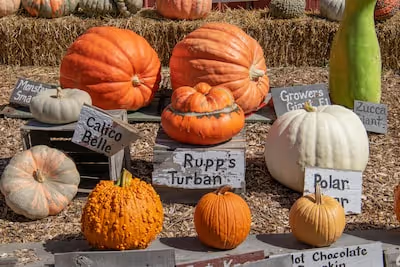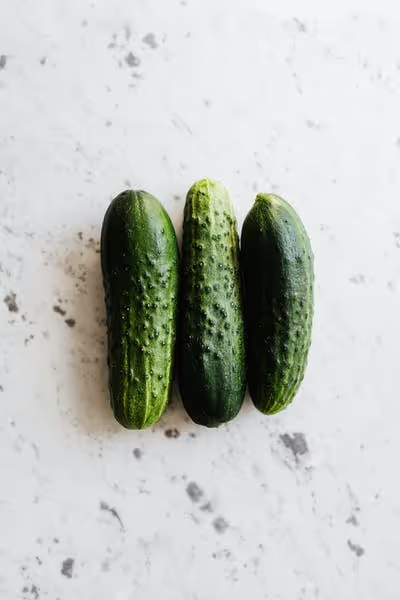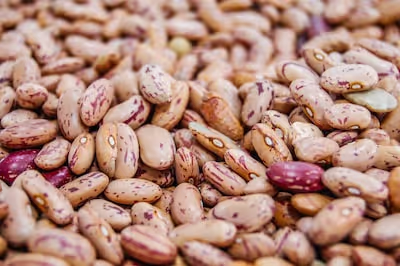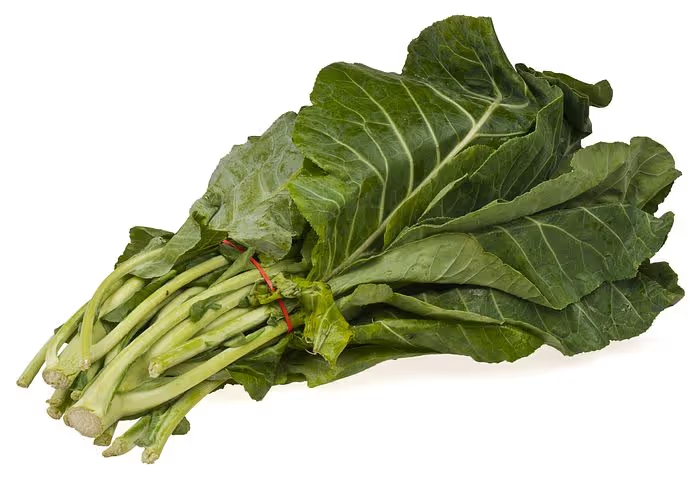Growing Peppers: How to Plant, Care, and Harvest for Success
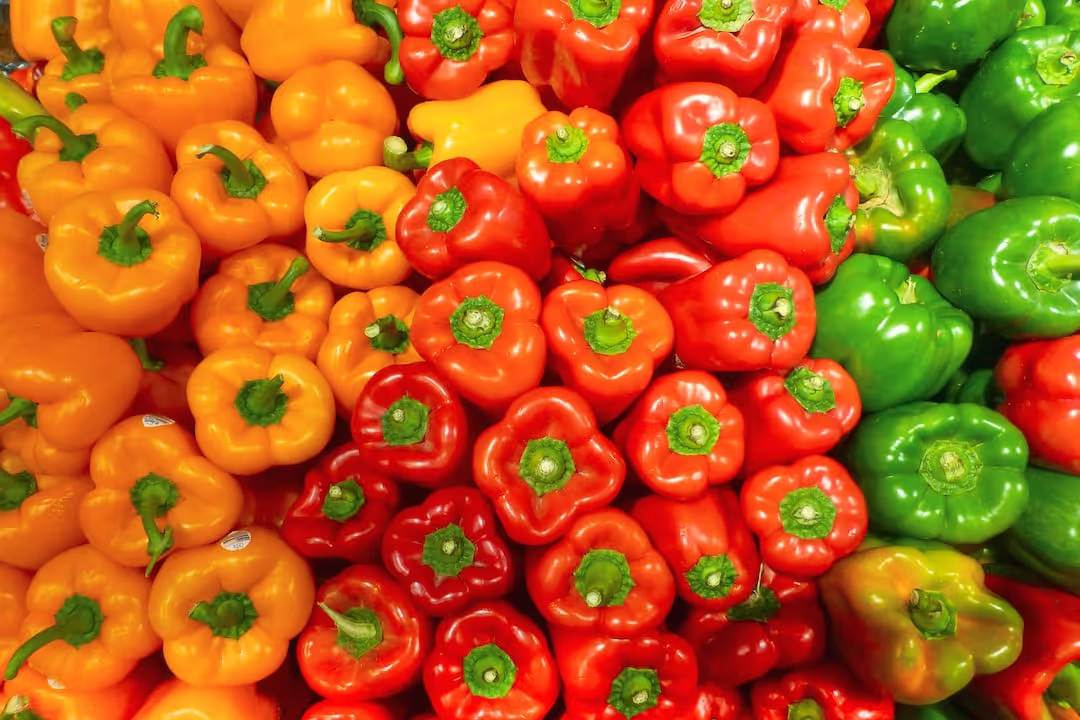
Growing Peppers
Growing peppers requires heat, sunlight, and soil that drains quickly—give them these and they'll deliver vibrant, flavorful harvests. Start pepper seeds indoors 6–8 weeks before frost clears, transplant outdoors once nighttime temperatures rise above 55°F, and watch the magic unfold. From mild bells to fiery habaneros, few garden crops reward your effort as deliciously as peppers; read on to master the finer details of growing peppers at home.
Cheatsheet: Mastering Pepper Growing at Home
🌱 Choose & Start Seeds
- Seed types: bell, jalapeño, cayenne, more
- Start indoors 8–10 wks before last frost
- 84–90°F (29–32°C) speeds germination
- Use sterile mix; sow 1/4 in (0.6 cm) deep
☀️ Transplant Outdoors
- Harden seedlings 7 days before planting out
- Move after risk of frost; soil 65°F+ (18°C+)
- Spacing: 18–24 in (45–60 cm) apart
- Full sun, loose, fertile, well-draining soil
💧 Water & Feed
- 1–1.5 in (2.5–4 cm) water/week
- Mulch keeps moisture, deters weeds
- Fertilize: Balanced 5-10-10 at planting, repeat at fruit set
- Peppers thrive in slightly acidic soil (6.2–6.8 pH)
🌿 Care & Pest Control
- Stake if needed; prevent fruit rot with airflow
- Scout for aphids, flea beetles, hornworms
- Use neem oil or insecticidal soap as needed
- Rotate crops to reduce soil diseases
🍎 Harvest Timing
- Yield: 5–10 lbs (2–5 kg) per 10-ft row
- Harvest green or red (flavor intensifies with color)
- Use pruners; don’t pull (damages plant)
- Frequent picking boosts more fruit
🧰 Tools and Products You'll Need
- Seedling trays & heat mat
- Trowel & pruners
- All-purpose fertilizer, mulch
- Stakes/cages for plant support
- Soil test kit for optimal pH
- Gloves for handling hot varieties
🥗 Health, Nutrition & Self-Sufficiency
- Rich in vitamin C, A, antioxidants, fiber
- One plant yields 20+ peppers
- Sun-ripened homegrown peppers: unmatched flavor, lowest food miles
-
Growing Peppers: How to Plant, Care, and Harvest for Success
I plan peppers like I plan summer road trips, with heat in mind and no appetite for frost. They repay that patience with fruit that tastes like sunlight.
Climate, Soil, and Timing
Growing Peppers starts with warm soil and steady nights. I transplant after nights hold above 55 F 13 C and soil sits at 65 to 70 F 18 to 21 C.
Seed germination shines at 80 to 90 F 27 to 32 C, and seedlings stall below 60 F 16 C. I harden transplants for 7 to 10 days, then plant just before a warm spell.
“Peppers are warm-season crops and very sensitive to frost.” UC Agriculture and Natural Resources
Soil Prep and Nutrition
I shoot for soil pH 6.2 to 6.8, rich in compost with excellent drainage. Beds get 2 to 3 inches 5 to 7.5 cm of finished compost and a preplant 5-10-10 or similar, worked 6 inches 15 cm deep.
Too much nitrogen gives leaves and no fruit. A little calcium nitrate at first bloom helps fruit set and reduces blossom end rot when paired with even moisture.
Seeds or Transplants
I start seeds 8 to 10 weeks before the last frost, on a heat mat at 80 to 85 F 27 to 29 C. Lights run 14 to 16 hours with a bright, close fixture.
Seedlings get bumped to 3 to 4 inch 7.5 to 10 cm pots at true leaf stage. I brush the tops daily to strengthen stems and keep fans moving to prevent damping off.
“Best pepper germination occurs at 80 to 90 F.” Johnny’s Selected Seeds Grower’s Library
Spacing, Staking, and Light Pruning
I space 14 to 18 inches 35 to 45 cm in row, with 24 to 36 inches 60 to 90 cm between rows. Compact types can run tighter, large bells need breathing room.
A simple Florida weave with stakes every 6 to 8 feet 1.8 to 2.4 m keeps stems off the soil. I pinch the first flower or two so roots anchor before the show starts.
Water and Mulch
Peppers want deep, even moisture, about 1 to 1.5 inches 25 to 38 mm per week. I favor drip tape and a thick mulch of straw, leaves, or black plastic to hold heat.
Soil that swings from soggy to bone dry triggers blossom drop. A cheap moisture meter or finger test saves a harvest.
Feeding Schedule
I side-dress at first flowers with a balanced organic fertilizer, then spoon-feed weekly at low dose through fruit set. High nitrogen during bloom slows the party.
On sand, I prefer frequent, lighter fertigation. On clay, I lean on compost and fewer feeds.
Pollination and Heat Management
Peppers self-pollinate, though gentle wind or a quick shake at midday helps. Big heat stalls pollen, and I see drop above 90 F 32 C days or below 60 F 16 C nights.
Shade cloth 30 percent trims sun scorch in heat waves. In spring I use row cover for warmth, then pull it off once flowers open.
Pests and Diseases
Aphids, thrips, flea beetles, and pepper maggot can chew profits. I scout twice weekly, release lacewings early, and use insecticidal soap or spinosad with care when thresholds hit.
For disease, rotation away from tomatoes and eggplant for 3 years pays. I pick varieties with X3R bacterial leaf spot resistance, avoid overhead water, and raise beds to dodge Phytophthora.
“Blossom end rot results from calcium imbalance and irregular moisture, not a pathogen.” University of California IPM
Harvesting Strategy
Green bells pick early and crisp, but full color brings sugar and aroma. Hot types gain heat and complex flavor with age, though yields per week drop as fruits hang.
I cut with pruners to avoid tearing. Expect 10 to 25 peppers per plant in good soil, more for small-fruited types and less for superhots.
Postharvest Handling
Peppers hold best at 45 to 55 F 7 to 13 C and 90 to 95 percent humidity. Typical fridges run colder, so I use the crisper and breathable bags and eat them fast.
For hot peppers, I dry at 125 to 135 F 52 to 57 C until brittle, then jar. Roasted bells freeze beautifully after peeling and seeding.
Varieties I Trust After Too Many Seasons
- Bell and blocky: Carmen F1 60 to 80 days, sweet frying type with exceptional flavor; King of the North for short seasons; Atris and Cornito Rosso for long, tapered sweetness.
- Jalapeño: Jalafuego F1 70 days, thick walls and high yields; Early Jalapeño for cool nights; Craig’s Grande for stuffing.
- Thai and cayenne: Thai Hot 80 days for compact pots; Ring of Fire for quick drying; Cayenne Long Slim for classic powder.
- Habanero and Caribbean: Habanero Orange 95 to 100 days, fruity heat; Aji Dulce for that perfume with low burn.
- Superhot: Bhut Jolokia and Carolina Reaper 100 to 120 days, needs heat and patience; best under cover in cool zones.
- Container stars: Lunchbox series, Shishito, and Mini Bell mix. Short internodes, quick to fruit, happy in 5 to 10 gallon 19 to 38 L pots.
- Disease resistance tags to watch: X3R or X5R for bacterial spot, TMV and PVY for virus packages on some hybrids.
Buying Guide and Gear That Earns Its Keep
- Heat mat with thermostat for steady 80 to 85 F 27 to 29 C germination.
- LED grow light delivering 200 to 300 PPFD for seedlings and 400 to 600 PPFD for stocky transplants.
- Bottom-watering trays and 50-cell inserts for efficient root balls.
- Soil test kit, pH 6.2 to 6.8 target, plus a simple EC pen if you fertigate.
- Drip kit with 0.5 gph 1.9 lph emitters and a timer. Mulch, either straw or black film in cool springs.
- Felco or ARS snips for clean harvest cuts. Stakes and twine for a Florida weave.
- Seed sources with strong tech sheets and resistance info from reputable growers and extensions.
Troubleshooting Quick Hits
- Flowers drop in heat: add 30 percent shade cloth, water in early morning, keep mulch thick.
- Black, sunken fruit tips: calcium issue plus uneven water. Steady irrigation and mulched roots fix it faster than foliar sprays.
- Leaves curl upward: heat or mites. Check undersides with a hand lens and release predatory mites if needed.
- Blistered fruit skins: sunscald. Train foliage to shade fruit and adjust spacing.
- Plants sit and sulk after transplant: cold soil. Warm the bed with black plastic ahead of planting.
Advanced Corner: Season Extension and Hydro
Low tunnels with clear film add 3 to 5 weeks in spring, and 30 percent shade cloth saves August fruit. Vent daily to avoid humidity spikes that trigger disease.
Hydroponic peppers run well at EC 2.0 to 2.8 mS cm, pH 5.8 to 6.3. I prune lightly for airflow and trellis early to a double leader for clean canopies.
Seed Saving Without Surprises
Peppers self, but bees wander, so I isolate 100 to 200 feet 30 to 60 m or bag blossoms for purity. I ferment seeds 2 to 3 days, rinse, then dry on screens for a week.
Label by date and variety, then store cool and dry. Good seed keeps 2 to 4 years with stable conditions.
Pepper Lore, Heat, and a Few Numbers
FAO reports over 36 million metric tons of green chilies and peppers produced worldwide in recent years. That is a lot of salsas and stir-fries riding on summer weather.
Scoville Heat Units measure capsaicin punch, from bell at 0 to jalapeño at 2,500 to 8,000 to habanero at 100,000 to 350,000. Superhots break a million, which I handle with gloves and respect.
“The heat is not in the seed but in the placental tissue.” Paul W. Bosland, Chile Pepper Institute
Field Notes I Stand By
I plant into warm, raised beds with compost and steady drip, then I trellis early. I thin fruit on young plants so the first flush sizes up fast, which kickstarts a longer set.
I keep a harvest knife in my pocket from July through frost. The plants repay discipline with piles of glossy fruit that taste like July even in October.
References and Further Reading
- UC Agriculture and Natural Resources, Vegetable Production Series, Pepper crop notes.
- University of Florida IFAS Extension, Pepper production guides and cultivar performance.
- University of California IPM, Pepper pest management and blossom end rot fact sheet.
- Johnny’s Selected Seeds, Pepper culture and germination guidelines.
- FAOSTAT, Global production data for chilies and peppers.
- Chile Pepper Institute, Scoville and capsaicin education, Dr. Paul W. Bosland.
Frequently Asked Questions About Growing Peppers
What type of soil works best for pepper plants?
Pepper plants thrive in rich, well-draining soil with plenty of organic material. Aim for loamy soil mixed with compost, maintaining a soil pH between 6.0 and 7.0 for optimal growth.
How much sunlight do pepper plants require each day?
To produce healthy, vibrant peppers, ensure plants receive at least 6–8 hours of direct sunlight daily. Full sun exposure encourages robust growth and abundant fruiting.
How frequently should peppers be watered?
Water pepper plants consistently, about once or twice per week, providing around 1–2 inches (2.5–5 cm) of water weekly. Keep soil evenly moist but avoid waterlogging to prevent root diseases.
When is the ideal time to plant pepper seeds?
Start pepper seeds indoors approximately 8–10 weeks before your area's last expected frost date. Peppers thrive in warmth, so transplant seedlings outdoors only after nighttime temperatures consistently remain above 55°F (13°C).
Should pepper plants be fertilized regularly?
Yes, regular applications of balanced fertilizer benefit growing pepper plants. Apply a fertilizer with a balanced NPK ratio (10-10-10 or 5-5-5) every 4–6 weeks throughout the growing season to nourish vigorous growth and fruit production.
How can pepper plants be protected from pests?
Maintain healthy pepper plants by inspecting regularly for common pests like aphids, spider mites, or caterpillars. Employ organic controls such as insecticidal soaps or introduce beneficial insects like ladybugs for natural pest management.
When should peppers be harvested from the plant?
Harvest peppers as soon as they reach the desired size and color for their variety. Typically, sweet peppers mature within 60–90 days, and hot peppers may take slightly longer. Use pruning shears or scissors to avoid damaging the plant.
Can pepper plants be grown successfully in containers?
Absolutely. Select containers with adequate drainage holes, at least 12 inches (30 cm) in diameter, to accommodate healthy root growth. Container-grown peppers require consistent watering and regular feeding, especially during warmer weather.
Growing peppers rewards patience, a sharp eye, and a willingness to get your hands dirty. Start with healthy seeds or seedlings, give them warmth and steady moisture, and don’t skimp on sunlight. Keep an eye out for pests and pick your peppers at their prime—color deep, skin glossy, flavor bold. Good soil and regular feeding make all the difference. Rotate your crops, mulch well, and you’ll see returns season after season. For those who crave more variety in their beds, consider pairing peppers with other homegrown stars—maybe green beans or cucumbers. In the end, growing peppers means learning by observation, letting the plants tell you what they need, and savoring the bite of your own harvest. The best flavor always comes from your own dirt and sweat.
The Homesteader's Take: Cultivating Peppers for Food Security and Self-Sufficiency
Selecting Heirloom Pepper Varieties
- Fish Pepper: Compact plants, high yield, heat-tolerant; ideal for small-space gardening.
- Jimmy Nardello's Italian: Sweet peppers suitable for drying and preservation, vitamin C rich (169% daily value per 100g fresh).
- Anaheim Chile: Mild heat; versatile for canning, roasting, drying; productive in varied climates.
Seed Saving for Self-Reliance
- Allow healthiest fruits to mature fully, turning color and softening slightly.
- Extract seeds; rinse thoroughly to remove residue; spread on paper towels, dry at 65–75°F (18–24°C) for 5–7 days.
- Store dried seeds in airtight containers; label clearly; place in cool, dark location; viable up to 4 years with proper storage.
Companion Planting Strategies
- Basil: Improves pepper flavor and repels aphids, spider mites.
- Marigolds: Deter root nematodes; attract beneficial pollinators.
- Beans: Nitrogen-fixing; improve soil fertility, boosting pepper plant productivity.
Preservation Techniques for Year-Round Nutrition
- Drying: Slice peppers thinly; dry in dehydrator (130°F/54°C for 8–12 hrs) or air-dry in warm, ventilated area.
- Freezing: Roast peppers briefly (400°F/204°C, 20–30 mins), remove skins, deseed, freeze whole or sliced; retains vitamins A and C effectively.
- Fermentation: Chop peppers, mix with salt (2% by weight), ferment at room temp (65–75°F/18–24°C) for 7–14 days; probiotic-rich and flavorful.
Maximizing Resource Efficiency
- Reuse rainwater collected from roofs for pepper irrigation.
- Apply mulch (straw, grass clippings) to reduce water evaporation by 25–50%; suppress weeds; enrich soil organically.
- Rotate pepper crops yearly to minimize pests, diseases; maintain soil nutrient balance without synthetic inputs.
Find out which plants will thrive in your garden!
Answer a few fun questions and get custom plant recommendations perfect for your space. Let’s grow something amazing together!

start your season
